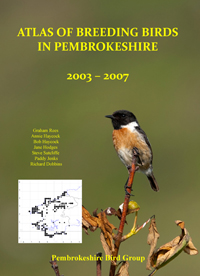Moorhen - 1994
 Thursday, December 15, 2011 at 5:29PM
Thursday, December 15, 2011 at 5:29PM Breeding resident
Once regarded as common and widespread by previous authorities, Saunders (1976) wrote that all the ponds and marshy areas had a pair or two of Moorhens. Their range has since retracted in the face of changing land use. Most of the old farm duck ponds have been drained and filled. Land reclamation has eradicated much of the marshy surrounds to ditches and streams. The streams and rivers have become subject to the intrusion of agri - chemicals leached from the surrounding land and to periodic bouts of pollution by farm slurry. Several suitable looking streams were followed during the 1984-1988 Breeding Birds Survey but no Moorhens were seen or heard, nor was there any trace of their footprints in the muddy margins
However, another agricultural development has attracted Moorhens. Farm irrigation reservoirs created in the potato-growing areas of the county are colonised as soon as sufficient vegetation has become established. There is a strong correlation between the present breeding distribution, and the cultivation of potatoes, though breeding has been continuous at long-established ponds, such as Bosherston Pools and in boggy areas such as the St David's commons. They have long bred on the islands of Skomer and Ramsey (Lockley et al 1949), on Caldey since at least 1924 (Wintle 1924) and Skokholm until 1936 when they became intermittance, until last recorded in 1975 (Betts 1992). An estimate of about 300 breeding pairs is based upon knowledge of the larger waters and the observation that most irrigation reservoirs support just one pair.
Apart from single birds found at the South Bishop lighthouse on 9 October 1884 and 9 November 1975, the only evidence of Moorhen migration in Pembrokeshire is provided by calls heard as they pass overhead at night in the autumn.

Fieldwork 1984-88 (based on 478 tetrads)
Red = breeding confirmed = 69
Orange = breeding probable = 15
Yellow = breeding possible = 66
Total tetrads in which registered = 150 (31.4%)


Reader Comments